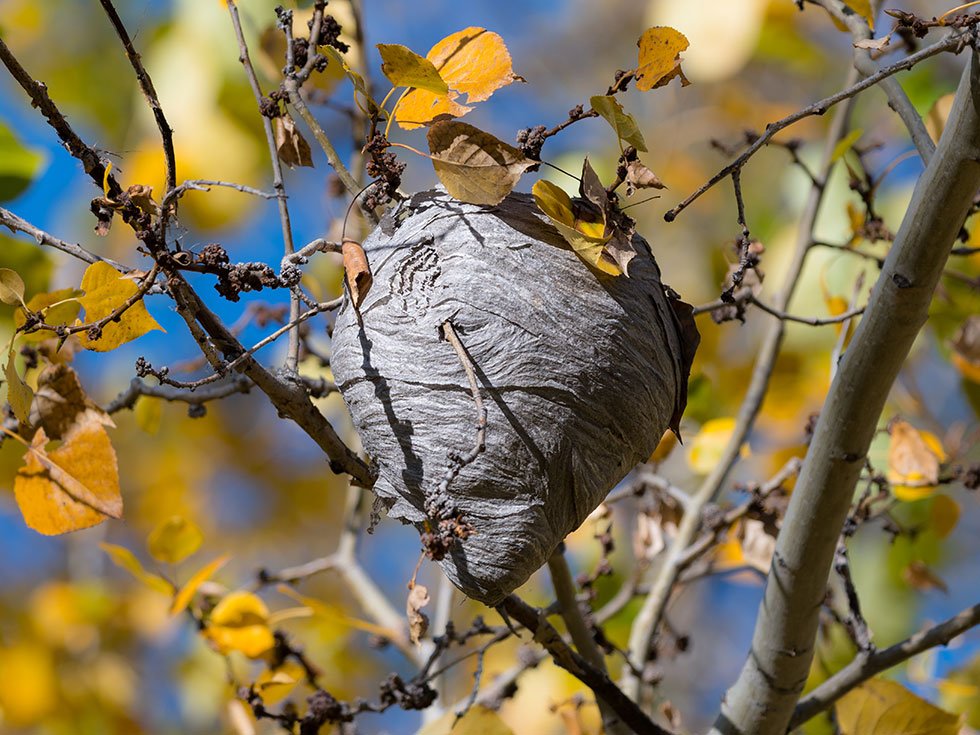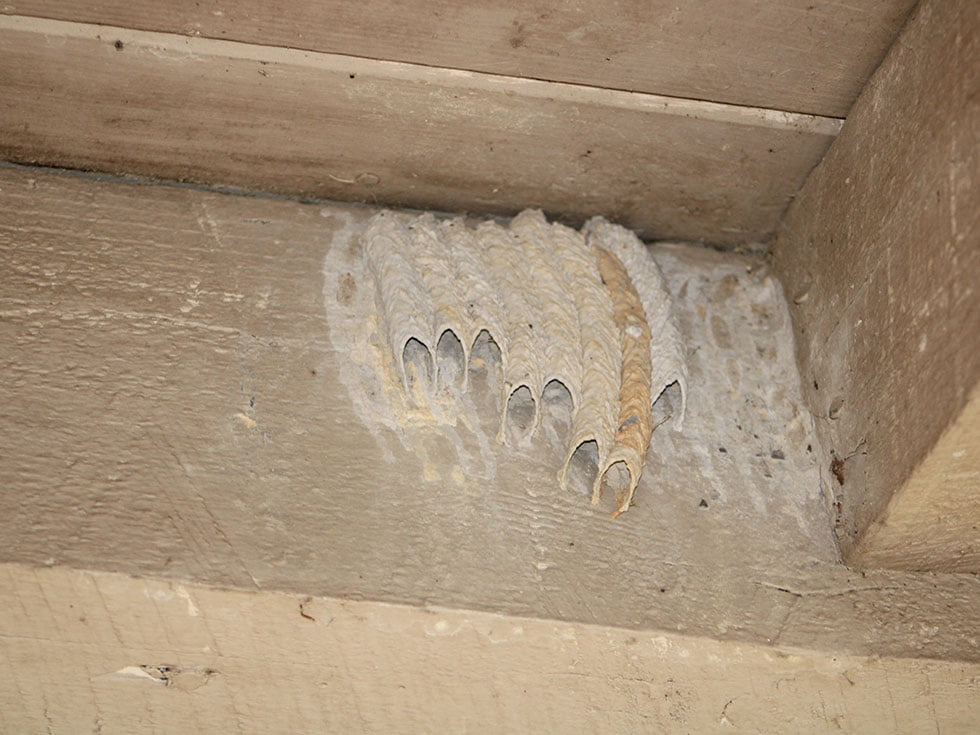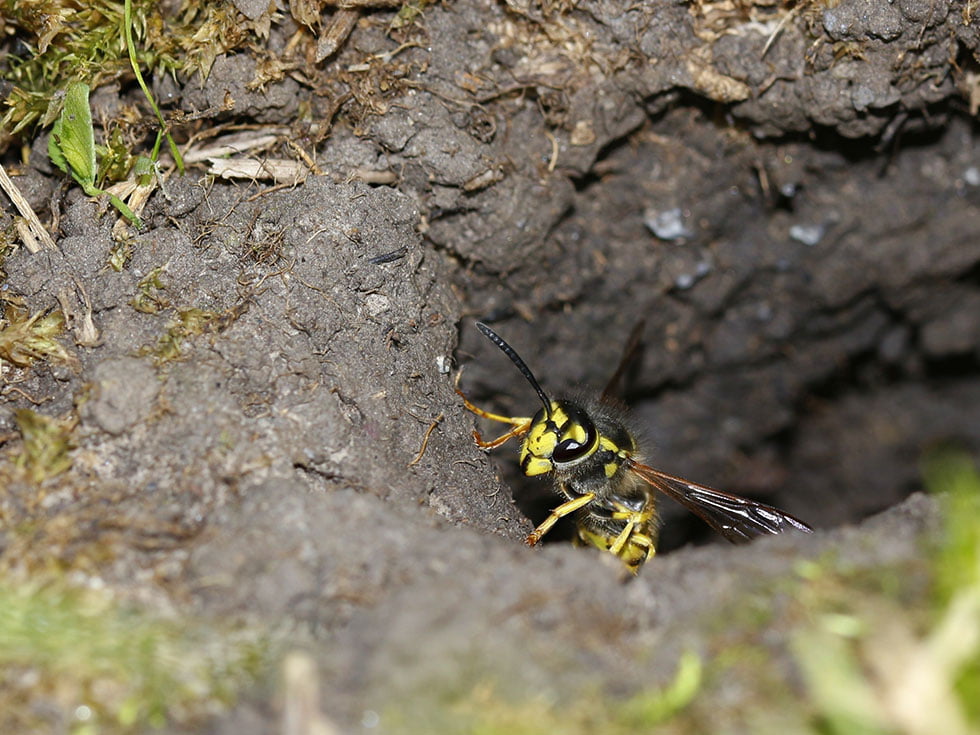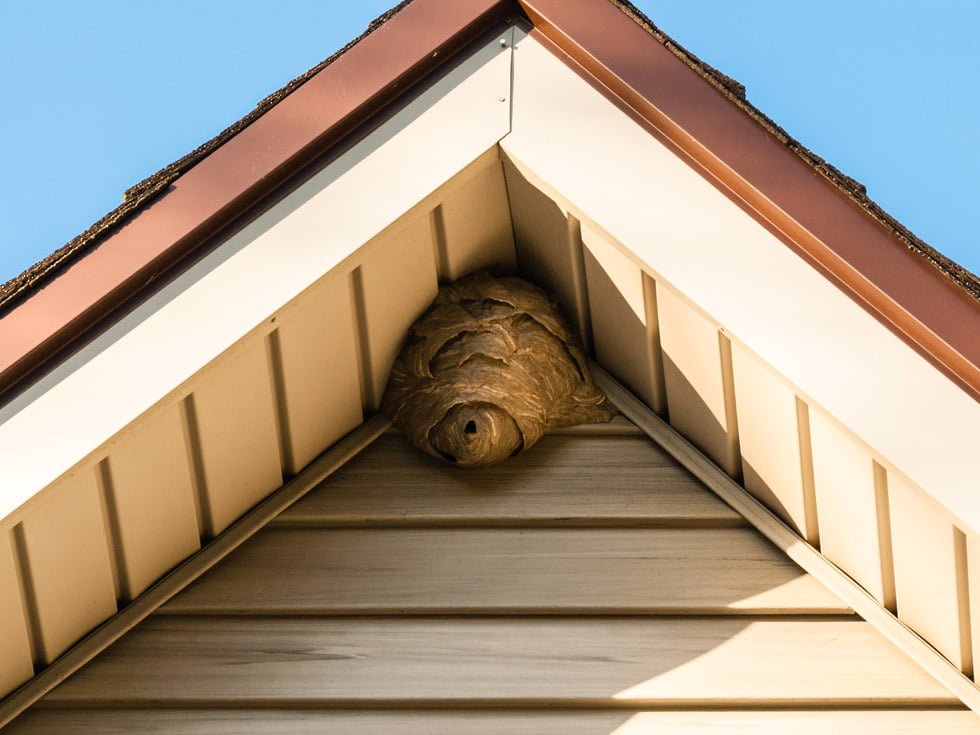The presence of a nest of wasps near the house can be worrisome. These aggressive insects will not hesitate to sting as soon as they feel threatened!
Learn more about the different kinds of wasp nests and the different ways of eliminating them.
Wasps in the yard
Wasps are drawn to the food that humans eat, so they often fly around waste bins. They can be quite persistent by flying around the table as you’re having a meal outdoors.
But how do you know if they’re simply passing through or if there really is a wasp nest nearby? There are several clues that should alert you about wasps’ activity on your property.
If the presence of wasps near your home is a source of concern to you, don’t hesitate to contact a professional exterminator. Avalanche Extermination will be able to confirm the existence of a wasp nest and eliminate it safely and permanently as required.
Signs that a wasp nest is active in the vicinity
If wasps bother you when you’re outdoors around the house, look out for the following clues:
- Constant wasp activity in the surrounding area
- Wasps frequently coming and going in the same area
- Increased number of wasps over time
You can also try to locate the nest by observing the wasps’ behaviour. For example, follow their comings and goings. If you approach a nest, they will become more agitated.A word of caution, however: some nests are visible, but others can be hidden inside a building’s structure or in the ground.
Precautions to take in the presence of wasps
Wasps are known to be aggressive, especially if they feel an imminent threat. They don’t hesitate to sting (with their stinger) to protect themselves.
Take the following precautions if you find or suspect there is a wasp nest near your home:
- Warn family members to stay away from the nest, as wasps can become agitated and may attack someone who comes too close to it.
- Stay calm and avoid sudden movements when wasps are nearby.
- Don’t walk barefoot outdoors.
Wasp stings
Wasp stings are usually painful and cause redness and swelling in the affected area. It is recommended to apply a cold compress directly on the sting. Swelling should disappear within the following hours or days.
However, some people are allergic to wasp stings. In this case, the reaction will be more intense. There will be more swelling and it may spread to other parts of the body, like the face. A person may experience difficulty breathing, weakness, nausea/vomiting, or even lose consciousness. It is very important to act quickly by seeking emergency medical care immediately or by dialling 911.
Different kinds of wasp nests
Because a variety of wasp species are active in Québec, various kinds of nests can also be found. Some are easier to recognize than others.
Some can be found hanging from a tree branch, under a cornice, inside building structures such as walls, attics, or chimneys. Other wasp nests are built at ground level.
Suspended nests
Some wasp species, like the common wasp (yellow wasp) and the German wasp, suspend their nests most often from a cornice, a tree branch or even inside buildings or sheds.

Mud nests
Potter wasps (also called mud wasps) build their nests out of mud. These kinds of nests are difficult to notice because they are often located in cracks, cavities or even in the ground. They can sometimes be found in the walls of a building.

Underground nests
Some potter wasps build their nest in the ground by digging tunnels. They then create galleries where they can lay their eggs. These underground networks are usually found in gardens, where the soil is easy to dig up.

How long does a wasp nest live?
Wasp nests follow an annual life cycle, meaning they only last for one season. They are built in spring by young wasp queens when they emerge from hibernation. During summer, the nests increase in size until the arrival of winter. A new nest will be built the following spring. An abandoned nest will not be recolonized the following summer.
Therefore, it is possible to leave an old wasp nest where it is. This could even ward off new wasp queens from building one nearby.
How to get rid of a wasp nest
The chosen method to permanently get rid of a wasp nest will depend on different factors, such as:
- The nest’s location (outdoors, inside the house, under a porch, in a tree, etc.)
- The nest’s size
- The nest’s accessibility (is it visible and easily accessible?)
Caution is required, and wearing long, protective clothing as well as closed shoes is recommended. The best time to exterminate a wasp nest is towards sunset, near nightfall. Sudden movements should be avoided.
Removing a wasp nest from a tree or an overhead space
Removing a wasp nest located in a tree or another elevated area yourself can be particularly dangerous. If the wasps decide to attack you while you’re perched at the top of a ladder, you could be seriously hurt, not to mention the many stings you could receive.
With the help of a professional exterminator like Avalanche Extermination, you can be assured the problem will be resolved quickly and safely. One visit is often all that is needed to exterminate a visible wasp nest, such as those found in trees.
However, it is possible to take care of this problem yourself, using an insecticide spray (canned aerosol). Wait for sunset to spray the nest while keeping a certain distance from it. The next day, you can remove the nest with a plastic bag and dispose of it in a waste bin.
Eliminate a nest in the ground
For an underground nest, the best solution is to use an insecticide in powder form made from pyrethrin. We recommend that professionals be called upon to ensure that the nest has been completely destroyed.
How to deal with an inaccessible nest, like a wasp nest in a wall
In the case of a nest that is invisible or inaccessible (like inside a wall, for example), it is strongly recommended to contact a pest control professional. The exterminator might first use a heat detector to localize the nest, and then eliminate it using a special foam insecticide so that the wasps are unable to return inside their nest.
It is important to avoid sealing (or plugging) the access point through which the wasps enter the nest. Otherwise, the wasps could try to escape through the inside of the wall, making further intervention much more difficult because the wasps would be dispersed deeper within the building’s structure.
What not to do
Upon discovering a wasp nest on your property, your first reflex was probably to run an Internet search on how to get rid of the nest yourself. You’ve no doubt read all kinds of advice, more or less informed.
Here are some popular tips you should actually avoid:
- Using white vinegar. White vinegar does not kill wasps. It will only repel them, and the wasps will come back once the vinegar dissipates.
- Using a fake nest to prevent another nest from being built. Fake nests do not discourage wasps from building a new nest in the vicinity.
- Using boiling water to kill an underground nest. This is a risky and inefficient method, because nests in the ground often have several entry and exit points.
- Using gasoline (petroleum) based traps should also be avoided. Such traps can be dangerous. However, traps that use bait should be placed far from areas used by people, as they will attract the wasps.
Professional exterminator to eliminate wasp nests
Calling on the services of a professional exterminator is the safest option to manage a wasp nest whether or not it is accessible. You’ll then be sure the problem will be resolved for good.

